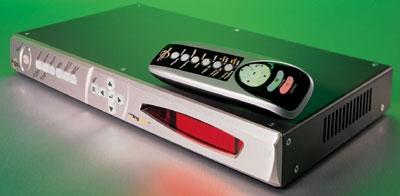Silicon Optix Image AnyPlace Video Processor

There are two ways to go about setting up a home theater. The first option is to rope off a room in your house, seal the windows, and then make any and all necessary modifications to turn it into a dedicated movie palace. The second, more common option is to take a space your family actually lives, works, and plays in and adapt it so that it can easily go from sitting to screening room.
| FAST FACTS |
| DIMENSIONS 15 x 1 3/4 x 8 1/2 inches PRICE $2,495; optional eWARP Designer software, $1,495 MANUFACTURER Silicon Optix, www.siliconoptix.com, 408-487-9290 |
| KEY FEATURES |
| • Corrects for off-center projector placement, up to 40° horizontal and 30° vertical • Scales all video to projector's native display format • inputs: DVI, VGA (RGB), standard and wideband component-video (wideband doubles as RGB+H/V), and composite/S-video; RS-232 • outputs: DVI and VGA (RGB) |
Video front projectors offer the biggest bang for your buck when it comes to image size - and quality. But getting one to work its best has often meant pursuing Option No. 1: a dedicated, custom-built theater. That's because front projectors are notoriously fussy beasts, demanding not just a cavelike environment but parallel placement and a direct line of sight to a screen positioned on the other side of the room. In the past, installers have found these requirements to be at odds with family rooms, but that was before Silicon Optix came out with its Image AnyPlace processor.
Looking and acting for the most part like a regular video scaler, the processor accepts standard and high-def signals from a DVD player, game console, or satellite/cable receiver and converts them to a format that matches your video display's native resolution. For example, it can take the 480i (interlaced) output from a DVD player and translate it to match an LCD projector's 1,280 x 720-pixel progressive display. It also offers high-quality deinterlacing of standard video originating on both film and video.
Where the Image AnyPlace differs from other processors is its digital keystone correction, which compensates for off-center projector positioning. The $2,500 base version lets you install a front projector up to 40° horizontally and 30° vertically off-center relative to the screen - a wide enough range to compensate for many room issues that would otherwise require remodeling. And for another $1,500, eWARP Designer software lets you do even more creative stuff, like projecting onto curved screens.
The slim, silver-faced processor's angled front panel is equipped with a full suite of backlit control buttons. These will come in handy if you lose - or, more likely, crush - the flimsy remote control. (At least its keypad is backlit and well laid out.) A full complement of connectors is on the rear panel (see "key features"), including an RS-232 serial port for use with advanced home theater control systems.




























































